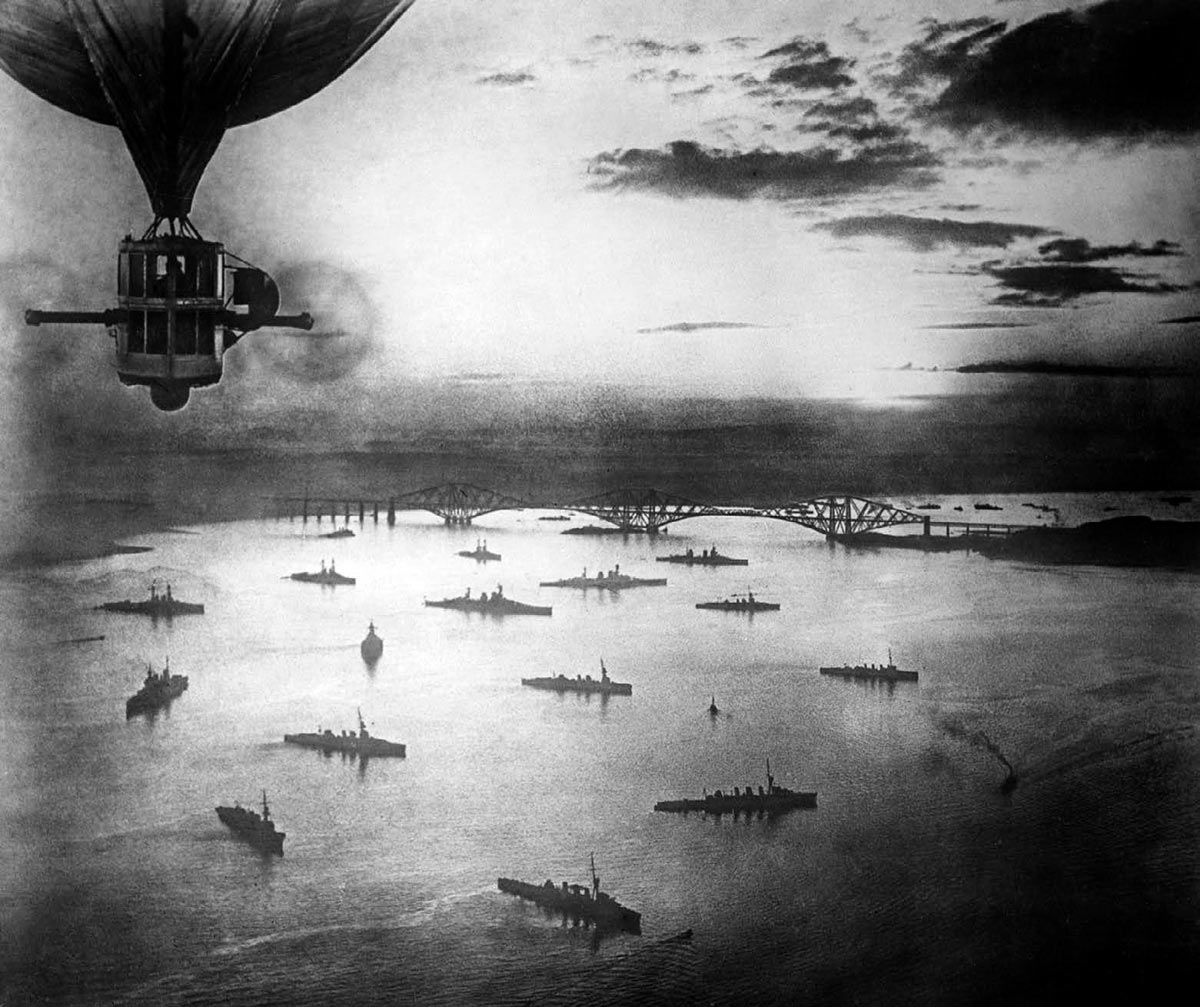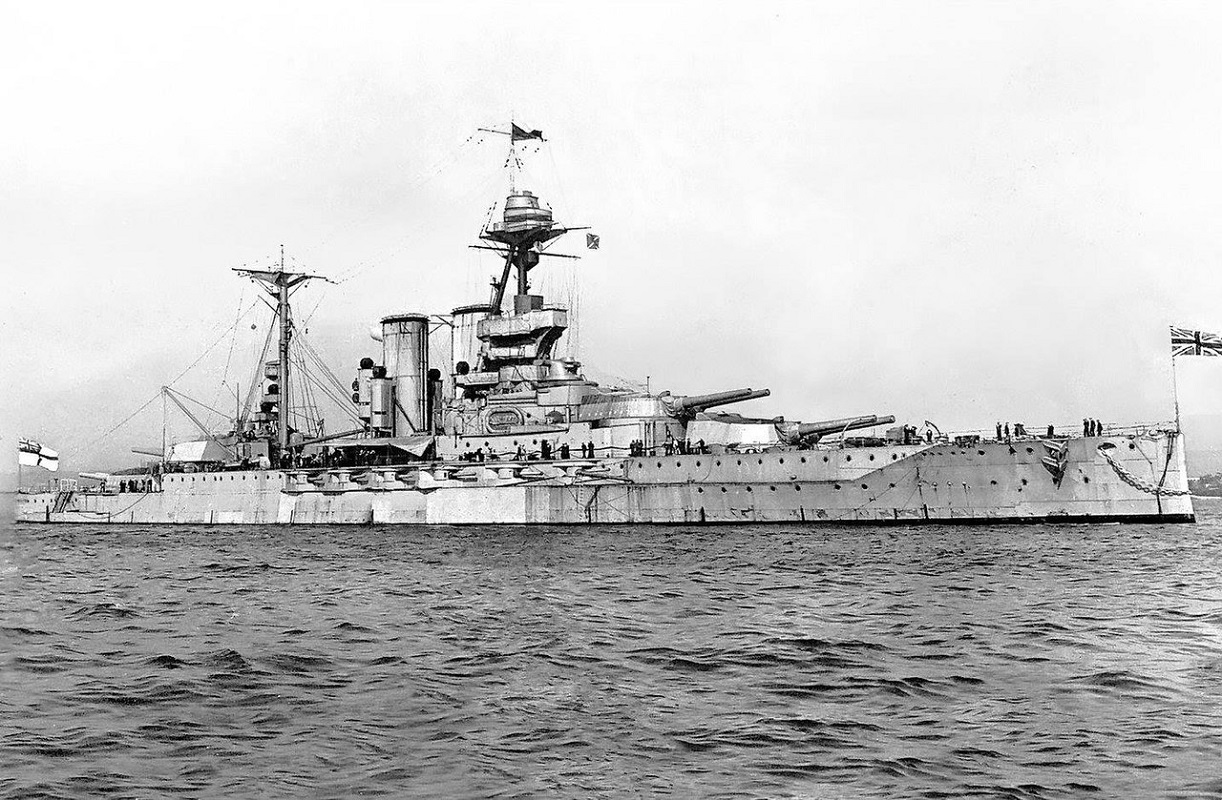Jan-2022
Could Filey Have Become a Major Naval Base?
During the early years of the twentieth century Britain was locked into a naval arms race with Germany. Technological advances had led to the creation of the Dreadnought Battleship, a ship whose combination of power, protection and speed rendered all previous battleships useless.
In the years leading up to the outbreak of the Great War, the shipyards of Britain and Germany attempted to outbuild one another. Whilst this was going on, it was becoming clear that these new ships required bases on the North Sea coast. The existing bases at Plymouth and Portsmouth had been developed when France and Spain were the navy’s main protagonists, with Germany’s growing strength, the navy needed a base on the east coast. Several locations were examined and, as the Yorkshire coast is among the closest in relation to the great German naval base at Wilhelmshaven, a serious study was undertaken to establish a naval base in Yorkshire.
The man who would lead the plans to develop a North Sea naval base, the German-born Prince Louis Battenburg, was no stranger to Filey. He had, along with his family, holidayed for a month at 36 The Crescent in 1900. A couple of years later Louis returned, this time as the Navy’s Chief of Intelligence. Twice he spent over a month in Filey, everyday he would be afloat in the bay in a hired coble, with charts spread on his knees, testing the set and strength of the currents and general run of the tides. The reports he wrote were subject of lengthy discussions at the Admiralty. To aid those discussions, Vice-Admiral Mostyn Field, the Navy’s Chief Hydrographer, took cross bearings of Filey Bay.
However, in 1903 the Admiralty decided that Rosyth near Edinburgh would be the location of the Royal Navy’s main North Sea base. Its location on the north bank of the Firth of Forth offered easy access into the deep waters of the Forth and onwards to the North Sea. There was also adequate room for a vast, and easily defended, anchorage for the battle fleet.

The fleet anchorage in the Firth of Forth, with the famous railway bridge framing elements of the Grand Fleet
In 1912, Filey’s champion, Prince Louis Battenburg became First Sea Lord, the professional head of the Royal Navy. With war approaching, he ordered an acceleration of building work at Rosyth. However, it was clear that the base would not be ready to accommodate the Grand Fleet and thus Scapa Flow in the Orkney’s became the navy’s war station.
By the end of the Great War the Grand Fleet had moved from Scapa Flow and was based at Rosyth. It was there that the German High Sea’s Fleet sailed to surrender in 1918. Some seventy German ships were met in the North Sea by nearly two hundred ships of the Royal Navy and her allies. It was the greatest concentration of naval power the world has ever seen. The German’s were escorted into the Firth of Forth and the official surrender took place on the fleet flagship, HMS Queen Elizabeth.

The flagship of the Grand Fleet, HMS Queen Elizabeth
What a sight it must have been as those huge armadas anchored in the Firth of Forth. Here’s a thought, had a different set of conclusions been arrived at when Louis Battenburg bobbed around Filey in a hired coble, it could have been the waters of Filey Bay that would have witnessed the surrender of the German High Sea’s Fleet and the greatest concentration of battleships in one place, in one day, ever seen in history.
Despite Louis Battenburg’s long service, and his marriage into the British Royal Family, anti-German feeling, fuelled by a vitriolic campaign by sections of the British press, forced his resignation from the navy in late 1914. He also changed the family name to the British sounding Mountbatten.
Thankfully, by the time of the death of Louis Battenburg, now Mountbatten, in 1921 a grateful nation had bestowed him with a lengthy list of titles: Admiral of the Fleet Louis Alexander Mountbatten, 1st Marquess of Milford Haven, GCB, GCVO, KCMG, PC.

Prince Louis Battenberg, later Mountbatten
His four children who holidayed with him at Filey in 1900 also left their mark on history.
The eldest daughter was Princess Alice of Battenberg. She would marry into the Greek Royal Family and became the mother of Prince Phillip and therefore would be the mother-in-law of Queen Elizabeth II.
The second daughter was Lady Louise Alexandra Marie Irene Mountbatten. During the Great War she served in a Red Cross hospital in France and in peacetime worked to improve conditions for slum children in London. She was to become Queen of Sweden as the wife of King Gustaf VI Adolf.
The first son, George, served in the Royal Navy for virtually his entire life, ending his career as Captain George Mountbatten, 2nd Marquess of Milford Haven, GCVO. He married the beautiful Countess Nadejda de Torby, a member of the Russian Imperial family and great-granddaughter of the poet Aleksandr Pushkin. Nadejda became embroiled in allegations of an affair with her friend Gloria Vanderbilt (upon whom the character of Holly Golightly in Breakfast at Tiffany’s was supposedly based upon).
The youngest of the family was Louis. Destined to become Admiral of the Fleet Louis Francis Albert Victor Nicholas Mountbatten, 1st Earl Mountbatten of Burma. In a stellar career Louis was, Supreme Allied Commander, South East Asia Command (1943–1946), the last Viceroy of India (1947) and the first governor-general of independent India (1947–1948). He later became First Sea Lord, Chief of Defence Staff and Chairman of NATO. He was murdered by the IRA by a bomb planted on his boat in County Sligo in 1979.

comment this post